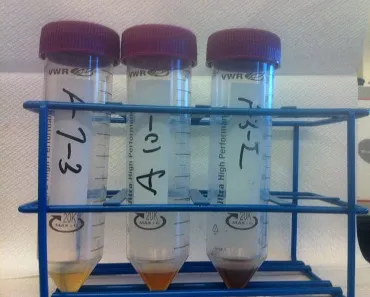How much cocaine is in your wallet?

For their Chem 43 research project, Ray Alfaro-Aco '12 and Vishaal Chhabria '13 quantified the amount of cocaine on US $1 bills from Philadelphia. The bills were collected from University City, Center City, Old City, South Philadelphia, and Chinatown by either asking for change or buying something inexpensive and paying for it with a larger bill.
To extract the cocaine from the bill, the whole bill was submerged in methanol (as methanol dissolves cocaine). The methanol containing the dissolved cocaine was then made more concentrated and inserted into the department's Gas Chromatography Mass Spectrometry (GCMS) device, which provided a qualitative analysis (indicating the presence of cocaine, among other substances) as well as the quantitative amount of cocaine present.
Ray and Vishaal found that all but one bill had cocaine on it and that most of the bills had 0-25 mcg of cocaine on them. Along with cocaine, they also discovered that $1 bills are contaminated with various food oils, the oils used in soaps/cosmetics, acetamenophin (Tylenol), and bisphenol A (BPA).

Click here to view a PDF of Ray and Vishaal's poster.
"This project allowed me to apply what I learned in class about various analytical chemistry techniques -- especially calibration curves and error analysis -- and learn how to present the data in a scientific way, all in order to solve an interesting chemistry problem," says Vishaal. "It also had us going through the analytical chemistry literature to find various techniques for sampling, which helped us understand the concepts even better."
For future experiments, Ray and Vishaal would like to test US $20 bills (or perhaps even larger ones) because they are frequently processed through ATMs. Because of their prevalence in ATMs, they are more accessible to people and they are also exposed to the cocaine dust on other bills.
Ray and Vishaal want to give their sincerest thanks the Chemistry Department's faculty, especially Professor Holiday, Dr. Trimble, and Mrs. Burkhard. "They all stayed really late, sometimes on weekends, to help make sure all of our data worked. They also helped out with the tedious parts, like dissolving the cocaine into methanol. Without their help, we'd still be working on this project."



